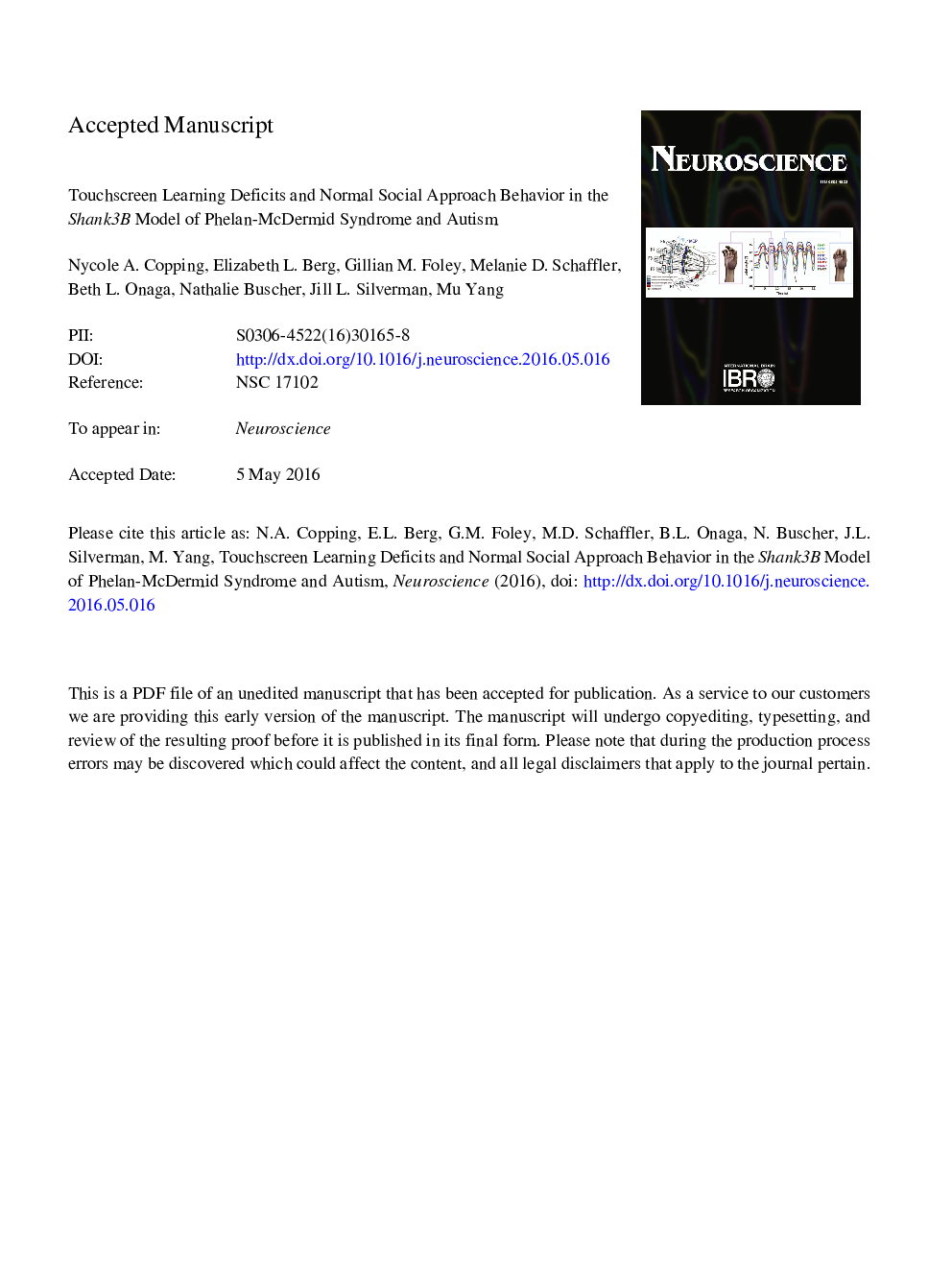| کد مقاله | کد نشریه | سال انتشار | مقاله انگلیسی | نسخه تمام متن |
|---|---|---|---|---|
| 5738000 | 1614731 | 2017 | 35 صفحه PDF | دانلود رایگان |
عنوان انگلیسی مقاله ISI
Touchscreen learning deficits and normal social approach behavior in the Shank3B model of Phelan-McDermid Syndrome and autism
دانلود مقاله + سفارش ترجمه
دانلود مقاله ISI انگلیسی
رایگان برای ایرانیان
کلمات کلیدی
موضوعات مرتبط
علوم زیستی و بیوفناوری
علم عصب شناسی
علوم اعصاب (عمومی)
پیش نمایش صفحه اول مقاله

چکیده انگلیسی
SHANK3 is a synaptic scaffolding protein localized in the postsynaptic density and has a crucial role in synaptogenesis and neural physiology. Deletions and point mutations in SHANK3 cause Phelan-McDermid Syndrome (PMS), and have also been implicated in autism spectrum disorder (ASD) and intellectual disabilities, leading to the hypothesis that reduced SHANK3 expression impairs basic brain functions that are important for social communication and cognition. Several mouse models of Shank3 deletions have been generated, varying in the specific domain deleted. Here we report impairments in cognitive function in mice heterozygous for exon 13-16 (coding for the PDZ domain) deletion. The touchscreen pairwise discrimination task was chosen by virtue of its: (a) conceptual and technical similarities to the Cambridge Neuropsychological Test Automated Battery (CANTAB) and NIH Toolbox Cognition Battery used for testing cognitive functions in humans, (b) minimal demand on motor abilities, and (c) capability to measure many aspects of learning and memory and complex cognitive functions, including cognitive flexibility. The similarity between our mouse tasks and human cognitive assays means a high translational validity in future intervention studies using preclinical models. Our study revealed that Shank3B heterozygous mice (+/â) were slower to reach criterion in the pairwise visual discrimination task, and exhibited trends toward making more errors (first trial errors) and more correction errors than wildtype mice (+/+). Open field activity was normal in +/â, ruling out hypo- or hyperactivity as potential confounds in the touchscreen test. Sociability in the three chamber test was also normal in both +/+ and +/â. These results indicate a deficit in discrimination learning in the Shank3B model of PMS and ASD, suggesting that this mouse model is a useful preclinical tool for studying neurobiological mechanisms behind cognitive impairments in PMS and ASD. The current findings are the starting point for our future research in which we will investigate multiple domains of cognition and explore pharmacological interventions.
ناشر
Database: Elsevier - ScienceDirect (ساینس دایرکت)
Journal: Neuroscience - Volume 345, 14 March 2017, Pages 155-165
Journal: Neuroscience - Volume 345, 14 March 2017, Pages 155-165
نویسندگان
Nycole A. Copping, Elizabeth L. Berg, Gillian M. Foley, Melanie D. Schaffler, Beth L. Onaga, Nathalie Buscher, Jill L. Silverman, Mu Yang,